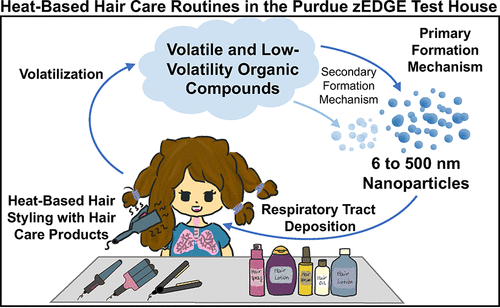A newly published study in Environmental Science & Technology has uncovered surprising risks associated with common heat-based hair styling activities, such as straightening, curling, and waving. Researchers from Purdue University found that these routines can generate astonishing concentrations of airborne nanoparticles, identifying a significant but previously overlooked source of indoor air pollution.
The investigation measured emissions during typical hair styling sessions using products like creams, lotions, and serums, operated at temperatures above 300°F. Experiments at the Purdue zEDGE Test House revealed that at heating temperatures beyond 300°F, hair styling devices emit 10,000 to over 100,000 particles per cubic centimeter, with sub-100 nm particles making up more than 95% of these emissions at the highest settings. Notably, these particles, classified as ultrafine and largely invisible, are capable of penetrating deep into the lungs, with modeling suggesting that a single styling session can deposit over 10 billion nanoparticles into an individual’s respiratory system, primarily targeting the pulmonary region.
The formation mechanism is complex, driven largely by the heat-driven volatilization of cyclic siloxanes and other low-volatility ingredients common in hair care products. Once vaporized, these compounds nucleate to form new particles, while reactions with common indoor air oxidants, such as ozone, create additional nanoparticles via secondary pathways like fragrance ozonolysis. Despite additional formation processes, the study concluded that heat-induced volatilization dominates emissions at higher styling temperatures.
Researchers tested several factors, including ventilation rates, hair styling duration, and product type. They determined that poorly ventilated indoor environments significantly boost nanoparticle exposure, as emitted particles linger longer and accumulate in greater concentrations. Additionally, the type of styling appliance matters: straighteners and curling irons produced far more ultrafine particles than wavers, correlating with more substantial respiratory tract deposition.
The findings have important public health implications, especially given the routine and close-to-breathing-zone nature of such activities. The researchers urge greater awareness of indoor air pollution risks stemming from personal care routines and recommend improved ventilation as a precautionary measure. They also call for further studies to precisely identify the molecular composition of these emissions and assess their potential health effects, pushing for innovations in safer product design and indoor air management.








